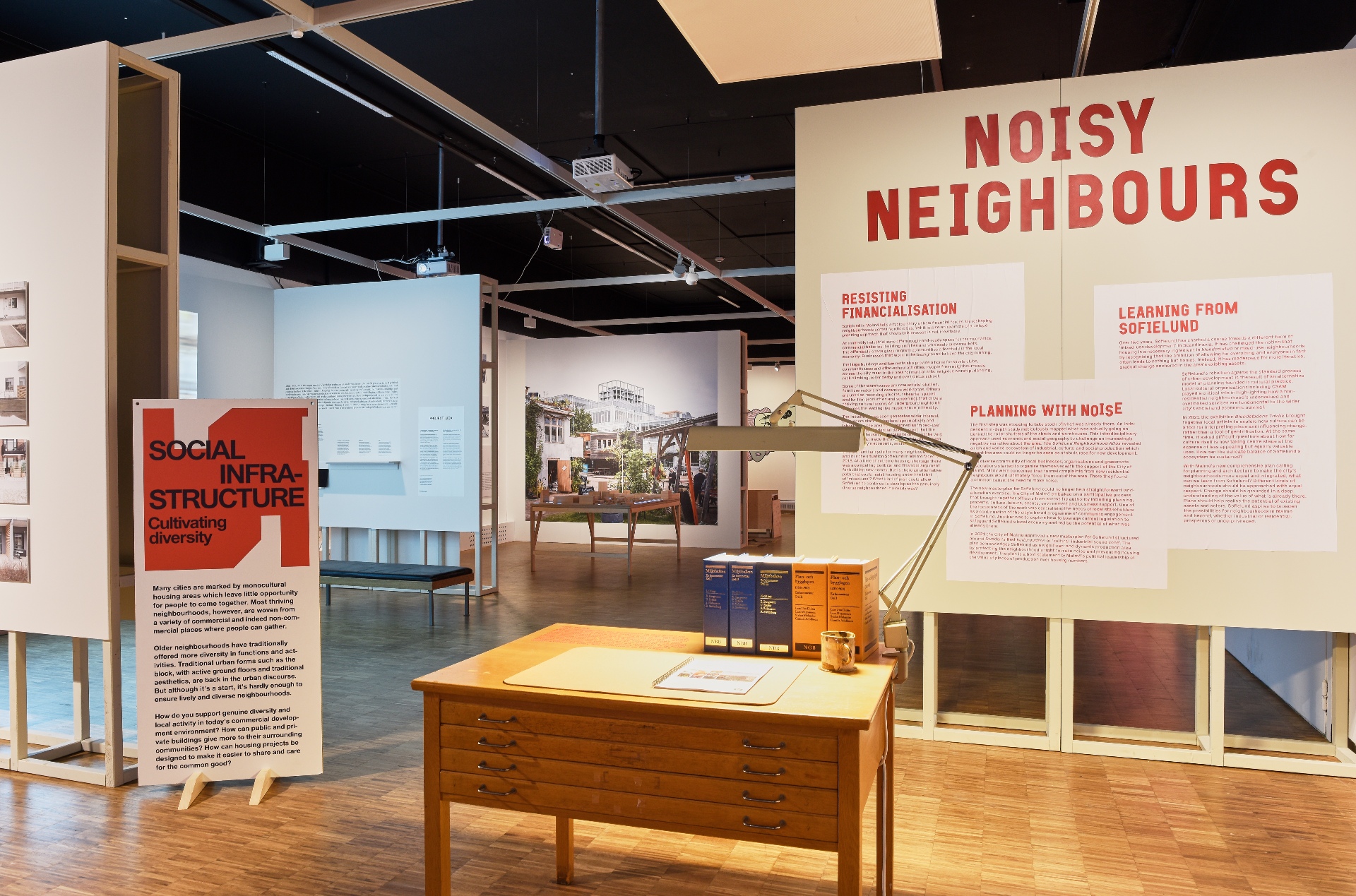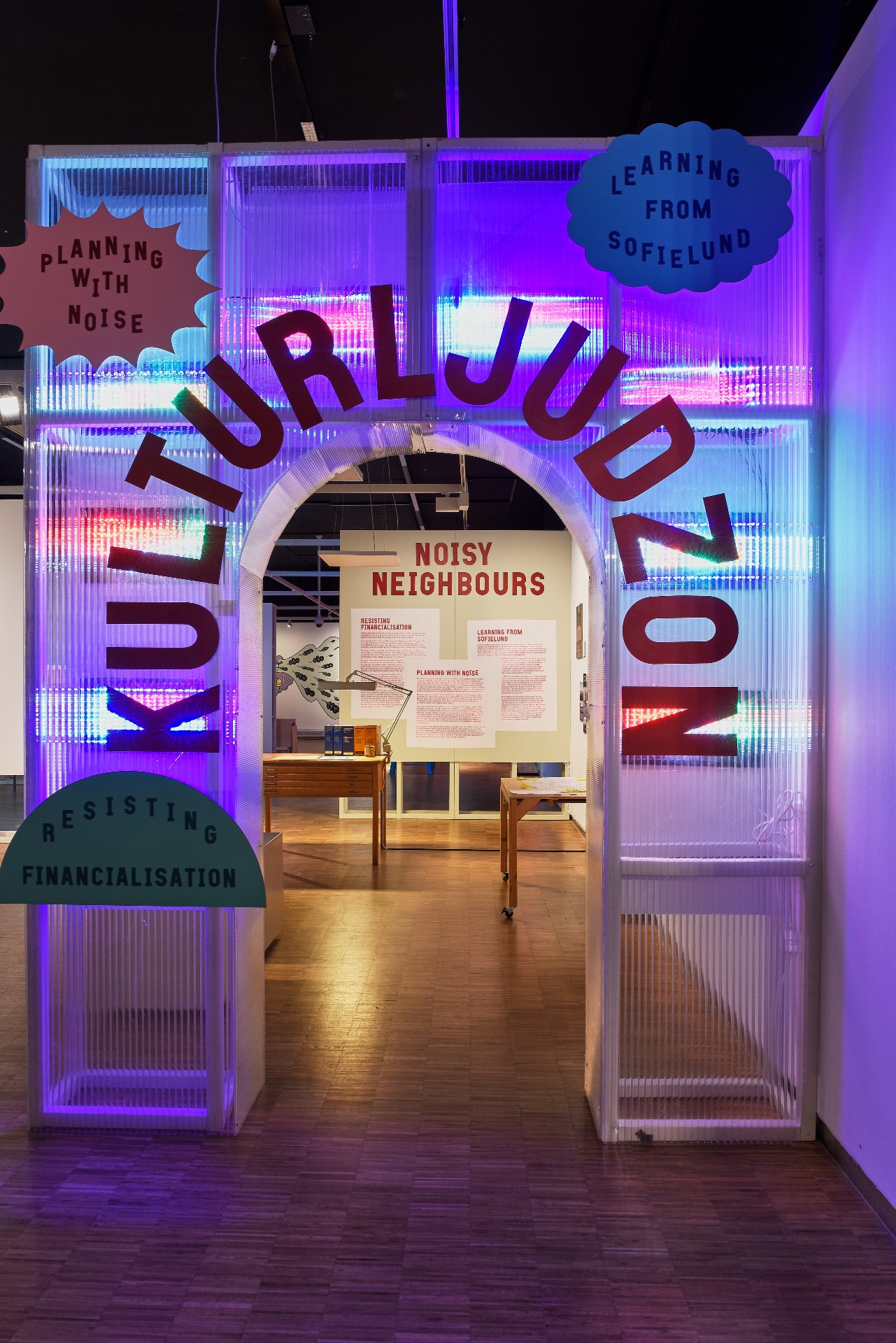Oslo Architecture Triennale 2022 spotlights neighbourhood and community
The 8th Oslo Architecture Triennale has opened, inviting us to discuss neighbourhood, community and the creation of urban space for all

The Oslo Architecture Triennale 2022 has opened its doors, and with it, a window into how we build our neighbourhoods. Discussing shared space, community and the urban corners we call our joint home, Norway's festival of architectural celebration (now, in its eighth iteration) touches upon one of our time’s most critical issues – the quality of living in the urban realm.
Chief curator and the triennale's director, Danish cultural strategist and academic Christian Pagh, elaborated on the multi-dimensional element of his chosen topic during the opening: ‘What is a neighbourhood? This is my definition: it’s a place where people live, a physical place but also a social one. There is a real community aspect. It answers to both individual and social needs, both in meaning and function.'

These layers of living and the different interpretations of what this shared space can be is exactly what Pagh and his team, as well as the main Oslo Architecture Triennale 2022 exhibition's participants, have sought to explore. The main show, titled ‘Mission: Neighbourhood’, after the festival's overall theme, is housed in the city's Old Munch Museum (a modernist 1963 structure by architects Einar Myklebust and Gunnar Fougner that has remained empty since the collections moved to their new home within Estudio Herreros' Munch Museum in the city centre). The display is a well-put-together, thorough survey of case studies, viewpoints and calls to action from across Europe – with a distinct Nordic focus.
‘We want this to be an international, critical, independent forum, and at the same time, Oslo is growing, so let’s also pay attention to our own environment, and have a regional, more Nordic perspective here. What if we front a Nordic renaissance of collective urban solutions?' asks Pagh. ‘Support diverse urban ecologies? The quality and diversity of neighbourhoods are under threat. We need to talk about them at a systemic level.' The research compiled several examples of urban spaces and ideas in the region, from Malmö's ‘Noisy Neighbours’, which examines noise levels as a planning tool; to a collaboration between JAJA Architects with Aalborg University Institute of Planning, and the Royal Danish Academy of Fine Arts featuring outdoor furniture specialist Vestre, on the role of cars in cities; and a project by BIG, which looks at the use of thermal energy for empowerment in hyperlocal growth. Topics such as biodiversity in urban space, rewilding and courtyards are also investigated.

Case studies from further afield include London, with Croydon Placemaking's work on inspiring civic agency towards creating meaningful connections between people and places; and Zagreb, through Croatian art and design collective Oaza's craft-focused local production initiative Project Ilica (a revisiting of independent maker spaces in the city's longest street). In separate areas within the Old Munch Museum, a section on Peter Cook's work zooms into colourful, imaginative drawings and utopian explorations that offer a kind of free-form bank of ideas in the British architect's signature style; and the Oslo School of Architecture and Design offers an element of dynamism through an ongoing discussion into ideas for cities on site.
Creating ‘nice, generous space' has fallen behind on our list of priorities, Pagh explains: ‘But the good news is that there are many people who are trying to create change and make things better.' Launching their investigations through ‘Mission: Neighbourhood’ and following up with a variety of events over the triennale's month-long duration, the team behind the festival also hope for it to grow. There is talk about understanding existing spaces, reimagining social infrastructure and governance, underlining the role of nature and alternative solutions. Pagh sees his triennale as a ‘critical hub for thinking', which will hopefully have a rich afterlife.

Beyond the relatively formal exhibition structure of the triennale's main show, a variety of further displays, activities and events unfold across town throughout the festival's duration. The Oslo National Museum's triennale exhibition ‘Coming Into Community’, for example, is a captivating riot of colour and sound, shining the light onto what shared space means for the queer community, and providing a valuable perspective on placemaking. It also features an interactive installation by Swedish art and architecture collective Mycket – a creative force to keep an eye on – that is hard to resist.
Receive our daily digest of inspiration, escapism and design stories from around the world direct to your inbox.
Between this, the main exhibition, and the Oslo Architecture Triennale 2022's various screenings, building tours, book projects, and meet-the-architect events beyond the Old Munch Museum's central hub, there is opportunity aplenty for locals and visitors to dive deeper into the festival's main theme – imagining and celebrating neighbourhoods, and their origins, life and future.

INFORMATION
Ellie Stathaki is the Architecture & Environment Director at Wallpaper*. She trained as an architect at the Aristotle University of Thessaloniki in Greece and studied architectural history at the Bartlett in London. Now an established journalist, she has been a member of the Wallpaper* team since 2006, visiting buildings across the globe and interviewing leading architects such as Tadao Ando and Rem Koolhaas. Ellie has also taken part in judging panels, moderated events, curated shows and contributed in books, such as The Contemporary House (Thames & Hudson, 2018), Glenn Sestig Architecture Diary (2020) and House London (2022).
-
 The new Tudor Ranger watches master perfectly executed simplicity
The new Tudor Ranger watches master perfectly executed simplicityThe Tudor Ranger watches look back to the 1960s for a clean and legible design
-
 This late-night hangout brings back 1970s glam to LA’s Sunset Boulevard
This late-night hangout brings back 1970s glam to LA’s Sunset BoulevardGalerie On Sunset is primed for strong drinks, shared plates, live music, and long nights
-
 How Memphis developed from an informal gathering of restless creatives into one of design's most influential movements
How Memphis developed from an informal gathering of restless creatives into one of design's most influential movementsEverything you want to know about Memphis Design, from its history to its leading figures to the pieces to know (and buy)